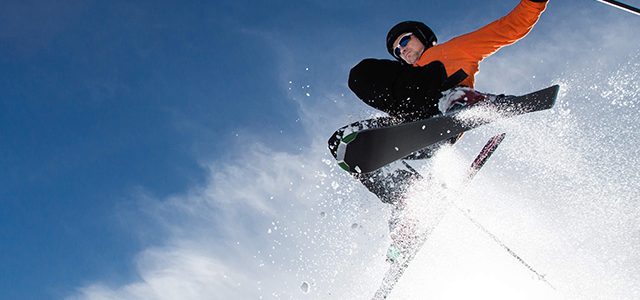
Kimberley Alpine Resort is ready to accommodate your ski Canada adventure. This resort has the sunniest skiing in British Columbia, with 4 different sections including the most gladed terrain in North America (over 500 acres). Love the feel of fresh air hitting your lungs as you break a sweat beneath the sun or stars? We don’t blame you. Spending time in nature is every bit as enjoyable as the hit of endorphins you get from revving your heart rate on a jog or hike.
So let’s be clear: Just because it’s winter (and there might even be some snow on the ground), that doesn’t mean you need to give up your outdoor fitness routine.
As long as you have the correct gear, you can still continue to get your sweat on outside—you may just have to change up what you’re doing. Before you settle in for a long winter of boring treadmill runs, consider trading your go-to outdoor workouts for these winter activities that burn mega calories and rev your heart rate just as much as your usual warm-weather routines.
Cross-Country Skiing
At a high intensity, this activity tops the charts when it comes to calorie burn. If you’re in good shape and well versed in the sport, you can burn up to 20 calories per minute—which is over 1,000 calories an hour, explains Wayne Westcott, Ph.D., C.S.C.S., professor of exercise science at Quincy College in Quincy, MA. “Cross-country skiing recruits your legs, quads, glutes, and because you’re pushing off the ground with each step, you’re using the abductors on your outer thighs, too, which you wouldn’t work running or riding a bike,” he says. “And you’re working even more musculature including your shoulders, triceps, biceps, and upper back by using the poles to help you propel forward.”
You can’t forget the core muscles, too. The one-pole-with-opposite-leg movement forces a constant twisting motion, working the obliques. Cross-country skiers are the athletes with the highest VO2 max (a.k.a. your peak oxygen intake, or how well your body delivers oxygen to your cells), says Westcott. “Even higher than marathon runners.”
Uphill Skiing or Skinning
This vigorous outdoor activity falls in right behind cross-country skiing, burning about 18 calories per minute, says Westcott. “That’s the equivalent calorie burn of running a five-minute mile,” he says. “And that’s just one mile—you’re doing a lot more work on skis.” When skinning, expect to fire up the hamstrings, glutes, and quads with each step, and the triceps, upper arms, shoulders, and upper back when using the poles. “You also have to maintain your posture, so your core and lower back will be working, too,” says Westcott.
Skiing
It only takes one look at Lindsey Vonn to know skiers need to have strong legs. Skiing depends on your inner thighs, hips, and outer thighs to help move your skis the direction you want to go. And because you have bent your knees when you’re on skis, this isometric position will keep your quads constantly activated, explains Tamir. All of this work can burn up to 300 calories per hour, according to Mayo Clinic. But that’s not all! “Feet are important and always moving when you’re skiing, but they get a lot of direction from the muscles in your shins and calves,” explains Wescott. “And with each 180 degree turn down the mountain, you’ll get tremendous work through your obliques and torso.”

